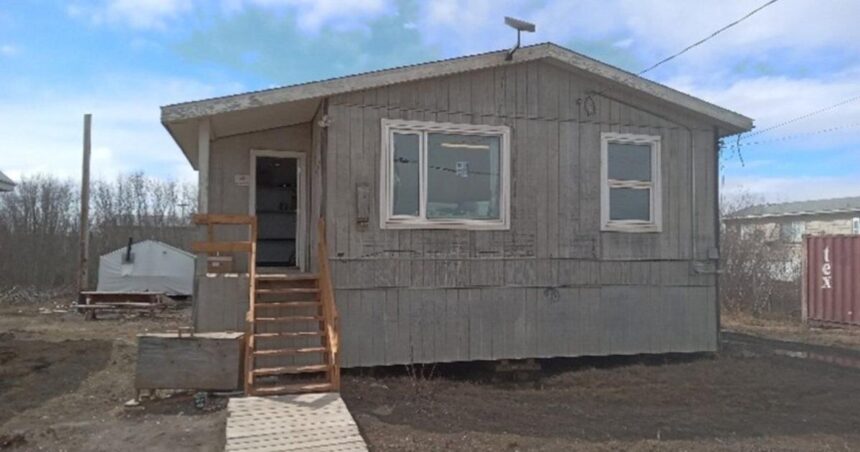A late autumn gale chased my arrival into Aklavik, a remote community of about 600 people nestled in the Northwest Territories. The November wind whipped across the Mackenzie Delta as elders guided me toward a cluster of tipis glowing amber against the early darkness. Inside, the air hung heavy with wood smoke and conversation, a stark contrast to the clinical feel of traditional mental health services.
“We talk differently when we’re on the land,” Martha, a community health worker, explained as she gestured for me to join a circle of residents seated on caribou hides. “The walls come down. People speak from the heart.”
For the past year, this northern community has been pioneering what locals call Wellness Nights – evening gatherings held in traditional tipis where community members discuss mental health challenges while engaging in cultural practices. The program represents a profound shift in how Indigenous communities are reclaiming mental health care through traditional knowledge systems.
“In a hospital, I feel like a patient. Here, I feel like myself,” said Robert Kuptana, a 62-year-old resident who regularly attends the gatherings. “We talk about hard things – addiction, grief, the residential school legacy – but we do it while making tools or preparing hides. The doing helps the talking.”
Research increasingly supports what Aklavik residents have intuitively recognized. A 2022 study from the National Collaborating Centre for Indigenous Health found that land-based, culturally rooted mental health interventions show significantly better outcomes for Indigenous communities than conventional clinical approaches. The study documented a 40% increase in program retention when traditional practices were incorporated.
Mental health challenges in northern Indigenous communities stem from complex historical and ongoing traumas. The Canadian Mental Health Association reports that suicide rates among Inuit youth are among the highest in the world – up to eleven times the national average. Yet accessing culturally appropriate care remains difficult in remote communities.
“We waited years for visiting psychologists who’d fly in, stay for two days, and leave,” said community elder Sarah Kuptana, who helped establish the Wellness Nights program. “Those approaches didn’t work because they didn’t understand our values or our history. We needed something that comes from who we are.”
Each Wellness Night weaves together traditional activities with focused conversation. During my visit, women worked collectively on a sealskin parka while discussing healthy parenting strategies. The atmosphere felt casual, but the conversations were deeply intentional.
“There’s no clipboard, no assessment form,” explained Thomas Arey, one of the program’s facilitators. “But we’re addressing serious mental health needs – intergenerational trauma, substance abuse, family violence – we just do it through our own cultural protocols.”
The initiative has drawn attention from Indigenous communities across the North. Representatives from six other communities have visited Aklavik to observe the program, with three already implementing similar approaches.
“What makes this work is that it belongs to the community,” noted Dr. Karla Jessen Williamson, an Inuk scholar at the University of Saskatchewan who studies Indigenous approaches to wellbeing. “This isn’t an outside program being implemented – it emerged from the community’s needs and values.”
The Canadian Institutes of Health Research recently documented how conventional mental health interventions often fail in Indigenous communities, partially because they separate psychological wellness from cultural, spiritual, and physical dimensions of health. Traditional knowledge systems, by contrast, view these elements as inseparable.
Standing beside a woodstove that warmed one of the tipis, Elder Peter Louie demonstrated how to properly carve a snow knife handle while speaking to younger community members about managing anger. The manual work created natural pauses for reflection in ways a conventional therapy session might not.
“Our people have always learned through doing and watching,” Louie explained. “In the old days, you wouldn’t sit someone down and lecture them about mental health. You’d take them hunting and talk while tracking caribou.”
The program faces challenges, particularly funding instability. Currently supported by a patchwork of territorial grants and community fundraising, organizers worry about long-term sustainability. Healthcare funding structures often favor medical models over Indigenous approaches, despite growing evidence of their effectiveness.
“We’re constantly having to justify our methods,” said community health director Marie Francis. “We’ve seen dramatic decreases in crisis interventions since starting these gatherings, but translating that success into stable funding remains difficult.”
As the evening deepened, the conversation turned to hopes for the future. Many spoke of expanding the program to include more on-the-land components and involving youth as facilitators.
“This isn’t just about addressing trauma,” said 19-year-old participant Jessica Kuptana. “It’s about showing younger generations that our traditions contain powerful medicine for modern problems.”
Walking back through the community after the gathering, the northern lights shimmered overhead in waves of green and purple. The metaphor wasn’t lost on me – ancient knowledge illuminating new paths forward.
For communities like Aklavik, reclaiming mental health means creating spaces where healing practices reflect cultural values rather than institutional ones. As one elder told me before I departed: “The land has always been our hospital. The traditions have always been our therapy. We’re just remembering what we already knew.”






